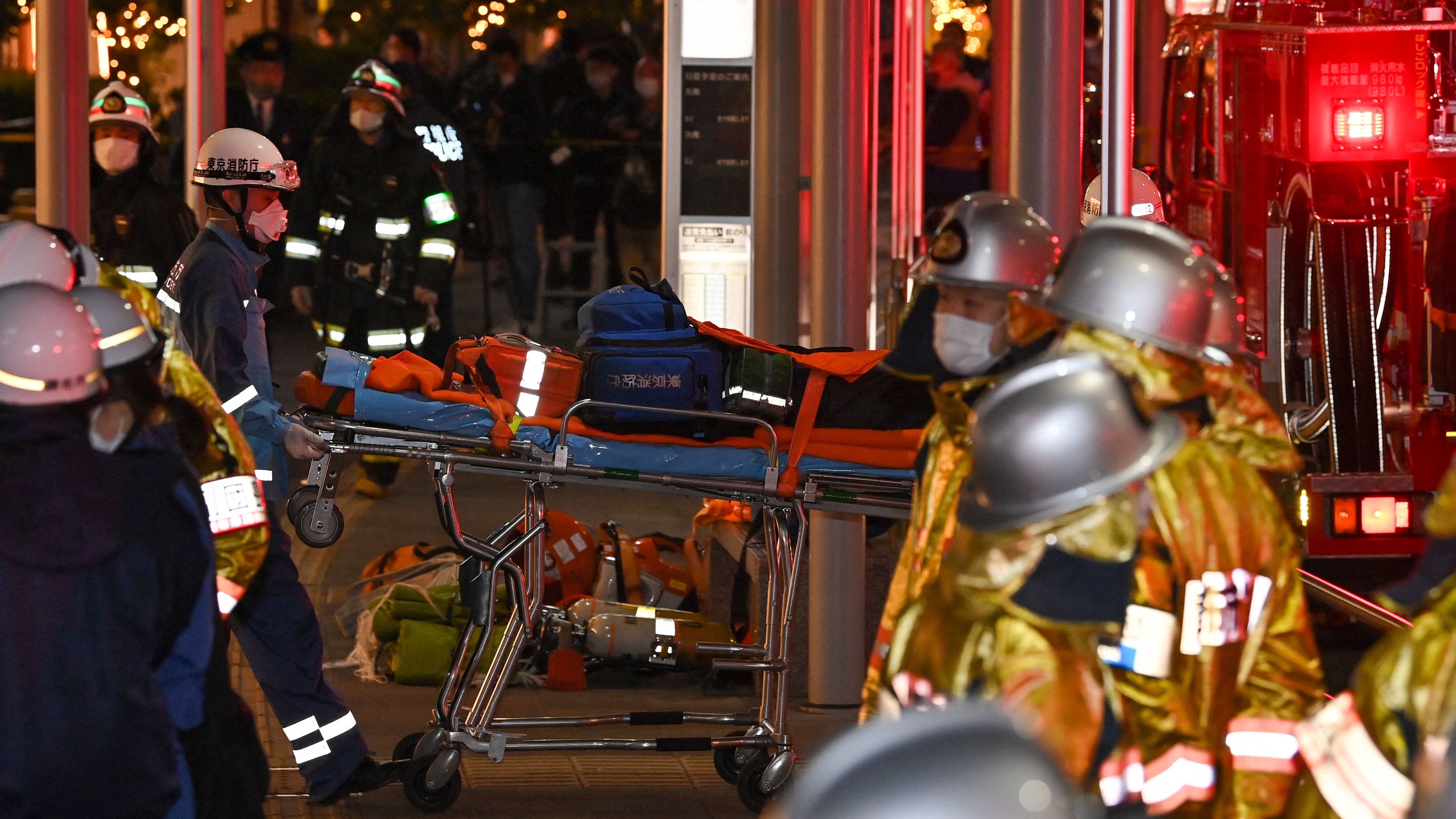Everything we know so far about the Tokyo ‘Joker’ knife attack
Suspect reportedly told police he wanted to murder to get ‘death penalty’

A man accused of injuring 17 passengers in a Tokyo train attack on Halloween while dressed as the Joker is said to have told investigators that he “adores” the Batman villain and “wanted to kill people and be given the death sentence”.
Kyota Hattori, 24, was arrested at the scene on suspicion of attempted murder after allegedly attacking passengers with a knife and starting a fire “using lighter fluid”, said Nikkei Asia. According to the Tokyo-based English-language newspaper, police said the suspect claimed to have been “thinking from around June of being sentenced to death”.
Photos and videos on social media show a bespectacled man dressed in a purple suit and green shirt like that worn by the Joker sitting smoking with his legs crossed after the attack as he apparently waits for police to arrive.
The Week
Escape your echo chamber. Get the facts behind the news, plus analysis from multiple perspectives.

Sign up for The Week's Free Newsletters
From our morning news briefing to a weekly Good News Newsletter, get the best of The Week delivered directly to your inbox.
From our morning news briefing to a weekly Good News Newsletter, get the best of The Week delivered directly to your inbox.
The Tokyo Fire Department said 17 passengers had been hurt, with three suffering serious injuries. A man in his 70s was reported to be in critical condition after being stabbed in the chest on the Keio Line train at around 8pm local time. Other passengers were treated for smoke inhalation.
Video footage of the attack “showed a steady stream of people running away from a train car”, Reuters said. Another clip “showed passengers rushing to squeeze out of the train’s windows and onto the platform where the train had made an emergency stop”.
Hattori allegedly attacked passengers with a “long knife” and then “spread fluid around” and “ignited it”, said Sky News. Footage posted on social media also showed flames “gushing from one of the carriages and some seats burned”, the broadcaster added.
The attack took place on an express line train from Hachioji, in the west of the capital, to Shinjuku station, “the world’s busiest”, last night “as people headed into the Japanese capital for Halloween parties”, Sky News said.
A free daily email with the biggest news stories of the day – and the best features from TheWeek.com
Nikkei Asia reported that Hattori was believed to have visited Tokyo's Shibuya district, “a hot spot for costumed partygoers to celebrate Halloween”, about two hours before the attack.
Hattori allegedly “told police he chose a limited express train bound for the city centre that makes few stops because it is generally crowded with passengers,” the paper continued. He also reportedly “expressed regret at failing to kill anyone in the attack”, explaining that “he had failed in work and had troubles in relationships with his friend”.
A witness told government-owned broadcaster NHK that passengers first thought the attack was “something like a Halloween event”.
Another witness said: “He held a knife and started spreading liquid. He was committing this act without showing any emotion, just mechanically. I think that brought fear to everyone.”
The attack is the second involving a knife on a Tokyo train in less than three months, after ten people were injured by a knife-wielding man on another Tokyo commuter train in August.
In 2019, a man attacked a group of schoolchildren waiting for a bus in Kawasaki, killing two and injuring at least 18 others.
-
 Venezuela’s Trump-shaped power vacuum
Venezuela’s Trump-shaped power vacuumIN THE SPOTLIGHT The American abduction of Venezuelan President Nicolás Maduro has thrust South America’s biggest oil-producing state into uncharted geopolitical waters
-
 Most data centers are being built in the wrong climate
Most data centers are being built in the wrong climateThe explainer Data centers require substantial water and energy. But certain locations are more strained than others, mainly due to rising temperatures.
-
 ‘Maps are the ideal metaphor for our models of what the world might be’
‘Maps are the ideal metaphor for our models of what the world might be’Instant Opinion Opinion, comment and editorials of the day
-
 How Bulgaria’s government fell amid mass protests
How Bulgaria’s government fell amid mass protestsThe Explainer The country’s prime minister resigned as part of the fallout
-
 Japan’s Princess Aiko is a national star. Her fans want even more.
Japan’s Princess Aiko is a national star. Her fans want even more.IN THE SPOTLIGHT Fresh off her first solo state visit to Laos, Princess Aiko has become the face of a Japanese royal family facing 21st-century obsolescence
-
 Femicide: Italy’s newest crime
Femicide: Italy’s newest crimeThe Explainer Landmark law to criminalise murder of a woman as an ‘act of hatred’ or ‘subjugation’ but critics say Italy is still deeply patriarchal
-
 Brazil’s Bolsonaro behind bars after appeals run out
Brazil’s Bolsonaro behind bars after appeals run outSpeed Read He will serve 27 years in prison
-
 Americans traveling abroad face renewed criticism in the Trump era
Americans traveling abroad face renewed criticism in the Trump eraThe Explainer Some of Trump’s behavior has Americans being questioned
-
 Nigeria confused by Trump invasion threat
Nigeria confused by Trump invasion threatSpeed Read Trump has claimed the country is persecuting Christians
-
 Sanae Takaichi: Japan’s Iron Lady set to be the country’s first woman prime minister
Sanae Takaichi: Japan’s Iron Lady set to be the country’s first woman prime ministerIn the Spotlight Takaichi is a member of Japan’s conservative, nationalist Liberal Democratic Party
-
 Japan poised to get first woman prime minister
Japan poised to get first woman prime ministerSpeed Read The ruling Liberal Democratic Party elected former Economic Security Minister Sanae Takaichi